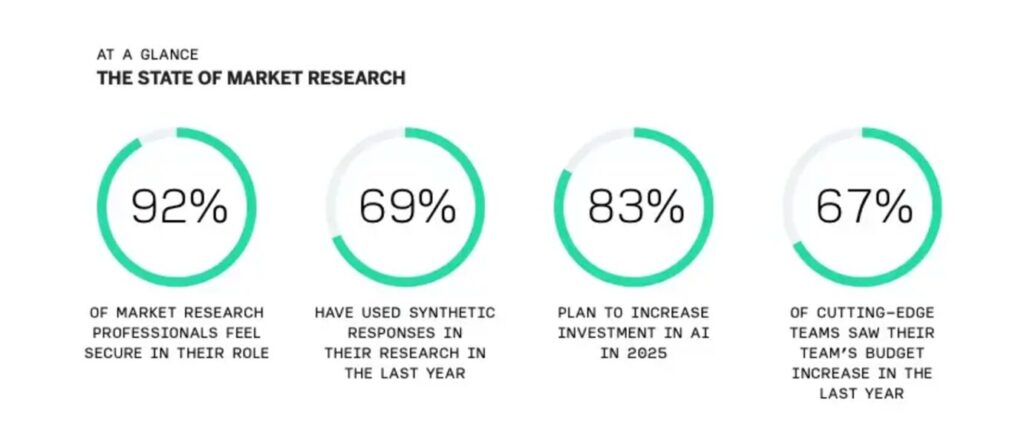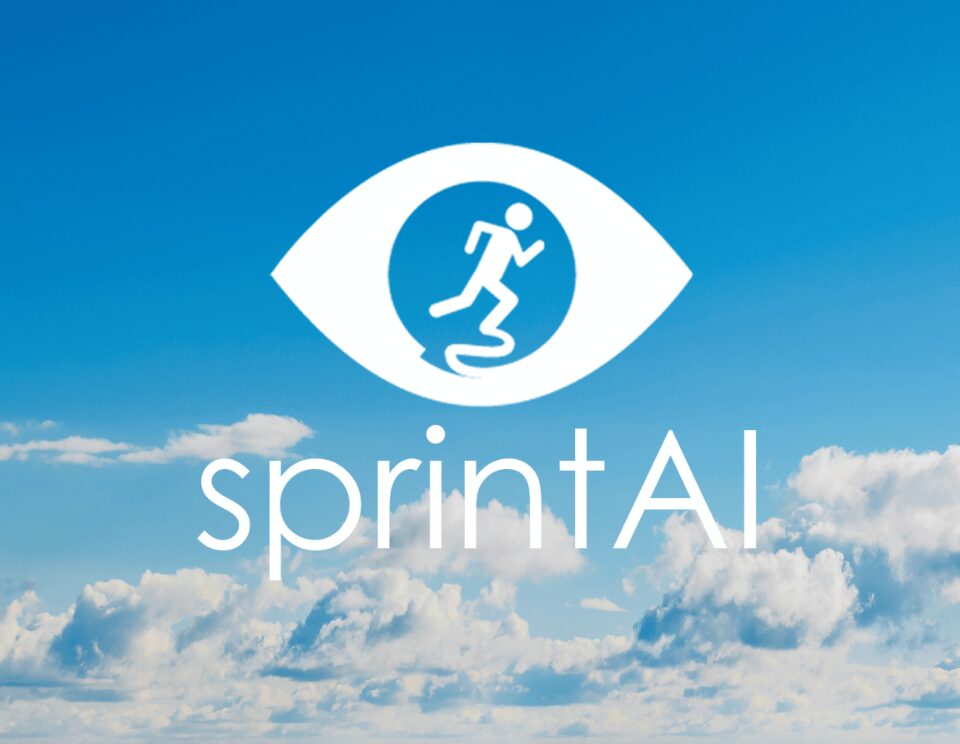Introduction
Drawing from both industry insights and our own perspective, this report explores key trends, challenges, and opportunities shaping the future of Market Research. Whether you're exploring emerging technologies, evolving consumer behaviours, or the real impact of AI, this read will help you cut through the noise and focus on what truly matters for driving innovation in the year ahead.
This annual Innovation Report is written by Jonathan Million, Chief Innovation Officer and Founder of Blue Yonder Research, in which he explores the year ahead and reviews 2024 predictions from both the market research industry and his own perspective.
Innovation moves fast and staying ahead in FMCG R&D requires both foresight and reflection. That's why this 2025 Innovation Report is designed to give you a clear, time-efficient overview of what's next – while also assessing how last year's predictions stacked up against reality.
Overview
As the title suggests, in a world where AI is literally delivering new solutions daily, we should evolve with caution by testing any new tools extensively to ensure we hold on to quality.
It is without doubt that automation and machine learning are here to stay, they are often the route to doing things either faster or cheaper. As ever it then becomes the humble human's role to ensure we are always striving and achieving 'better' results for our clients.
In 2024, the industry widely embraced this perspective, dispelling earlier fears that AI would eliminate jobs. Instead, we are recognising AI's limitations and appreciating how it enhances productivity by creating more time. You won't be surprised to hear that AI headlines quite heavily in this report, along with other up and coming themes such as 'Synthetic Data' and 'Artificial General Intelligence' (AGI), but fear not, all will be revealed and explained.
My view on AI remains the same: while AI can perform many tasks well, it still falls short of human-level capability. Take driving, for example – it requires handling unforeseen situations and random occurrences, where human judgment plays a crucial role in preventing disasters. An AI-controlled car, if it fails, could cause a high-speed crash. When AI goes wrong, the consequences can be severe – and that's not a risk you'd want to take on an important project!
So, let's firstly look at where we are right now, because of developments and advancements in 2024.
Market Research Industry Predictions 2024
How did the industry predictions for 2024 fare?
Integration of artificial intelligence and machine learning
Of course they were, and they will be right again this year! Qualtrics has summed up the rise in confidence of people, AI and the use of synthetic data here quite nicely.
Basically, the world is accepting AI and machine learning integration, and it will continue to grow by assisting humans to get to their goals in the most efficient way possible.
Data quality
A very serious point that I am pleased to say is being taken seriously by the industry. The key issue is consumer fraud and the introduction of 'bot' responses that can be hard to identify. As a response to the industry's race to the bottom for fast, automated, and low-cost data, global governing bodies established the Global Data Quality Initiative to set a standardised benchmark for data quality. We are right behind this and continue to build procedures that can identify fraud as well as search and callout bad practice, to ensure data quality and safety remain high.
A rise in digital qualitative research technology
Yes, scalable digital qual continues to grow and become more successful with accuracy levels that were once as low as 60%, rising above 80%, for live transcription and translation. There are still challenges around certain languages, but the algorithms are improving constantly, enabling qual teams to get more from the vast amounts of media they collect to tell their stories, quicker than they usually would.
Blue Yonder Industry Predictions 2024
Here is what Blue Yonder predicted for 2024, how did they fare?
Multimodal AI
All three major AI platforms have fully adopted this method. AI continues to evolve through merging as many relevant datasets as possible to search for the most accurate, relevant answers by combining video, audio, speech, images, text and a range of other datasets collectively in a comprehensive offer. The applications and opportunities are almost infinite and the appetite of the industry to want more is at its highest ever level, but we must progress with caution as there is a lot of danger to avoid. More on this later in the report.
Breakdown of service levels
It's a complex subject as never has the client budget been so sensitive, and never have expectations been so high. Long gone are the one-page proposals, clients now need to know what they are buying on a granular level, and across tiered service levels. It can be time consuming, but time well spent as without the layers of detail, you will become irrelevant to buyers.
DIY research
Hard to tell, but we have seen a drop on simpler work, which could lead to the assumption that smaller, simpler projects are being handled internally. We will continue offering our toolkit to clients who wish to conduct their own studies, fostering stronger partnerships and sharing our expertise across our growing global ecosystem. Collaboration remains the cornerstone of our strong client relationships.
Market Research Industry Predictions 2025
Synthetic data will revolutionise the research landscape
Reports are now claiming that synthetic data is already more reliable than over-used, disengaged, worn-out consumers taking part in surveys, although this is competing at the bottom of a barrel. As AI models trained on high-quality datasets simulate respondent behaviour, synthetic data offers solutions to challenges like data privacy concerns, fraud, data scarcity, and survey fatigue. Some research teams are satisfied with its results.
Now whilst that may be true in certain sectors of our industry, it is not entirely the case in R&D, I asked James Godfrey, our Senior Director of Statistics and Automation to explain why. "Synthetic data offers valuable research applications but requires careful consideration. It works well for predicting clear, objective outcomes, such as visual attention for new designs, where demographic and cultural factors are negligible. However, subjective measures like consumer preferences are riskier due to variability across demographic groups and cultural differences. The relevance of input data is crucial, using only historical data for innovative products may lead to poor predictions, as past preferences may not translate to future trends."
In the right hands I can see the benefits, it's ultimately the same as a weighting sample, which when done responsibly is valuable. But, and it's a big but, synthetic data is also open to all kinds of abuse and deception, ultimately robots will do as they are told, so let's see where it goes.
Battle of the bots – ChatGPT vs Gemini vs Apple AI
ChatGPT was the AI tool that got us all hooked on asking robots to do things and that amazed us at first with its results. Of course, we all quickly learned of the vanilla tones in everything it produced, with the actual benefits being more technical tasks like fixing code etc. However, the industry believes that Google Gemini looks like the favourite to dominate thanks to Google's access an ecosystem that provides a monstrous dataset to train the algorithm. Gemini has also been designed from the start to handle text, video, audio and images, whereas ChatGPT was post-taught, and let's face it, Google are so big in terms of infrastructure, it's hard to see them accepting 2nd place. With all sorts of new products coming in from all over the world such as DeepSeek from China, it really is a very competitive space with the richest companies from the largest countries in the world competing for the number 1 slot, so watch this space.
AI driven qual at scale
I have always been very cautious and as a company we have tested any new qual AI tools extensively before we used them on real client research. The reason for this is qual is the most human element in our toolbox, and to hand that over to the robots is a risk. That said, the industry continues to support this growing movement, a halfway house between qual and quant, quickly acquiring real human reactions to simple issues and helping to make quick decisions. I don't think we are ready for robots hosting groups yet, that requires top level human skills, but the robots can quickly search hundreds of hours of media for soundbites that validate findings, in a cost-effective manner that used to only be available to those with the largest budgets. And as consumers in their normal lives get more used to video calls and leaving video messages, the uptake of qual digital surveys is rising, it's so much easier now than it was 10 years ago to ask people to do a video diary, they actually want to do it, which is great for our industry.
It was harder to find predictions this year than in years gone by, and I think this is because the landscape is changing at such a ferocious pace, it's simply harder to predict things. I will monitor these throughout the year to ensure we remain on trend and we are ready to adapt to any new developments within AI.
Blue Yonder Industry Predictions 2025
Smart agile methodologies will dominate
Clients, more than ever need to achieve more, with less resources and in less time. The only way to achieve this is to be agile in every part of our business, offering stripped back versions of every methodology that is of use to our clients. I believe that the combination of internal agility and a partnership model with our network to assist them in being as agile and as efficient as possible is the way to answer our clients' needs in the modern world. A fixed mindset will be left behind in the current climate as clients look to their supply chain to clear the road ahead to assist a frictionless testing strategy that relies on pro-active partners with the most valuable, up to date toolkits. It's exciting and we love this approach at Blue Yonder.
AGI will become widely known throughout the year
Last year the phrase for combining AI data was Multimodal, that is now being summarised as AGI – Artificial General Intelligence. Simply put, this term is used where AI is performing at a human level. Hypothetically, if AGI can perform intellectual tasks exactly the way a human would including critical thinking and basic cognitive functions, then this could once again redefine the whole sector, as AI has been doing in recent years.
The challenge will be deciding if a tool is AI or legitimately step-changed to AGI. I suspect there will be lots of debates between the tech companies and research companies to decide what levels are acceptable. AGI will also change how machines interact with humans. We can already see the big tech companies trying to get their AI assistants to feel as human as possible, imagine where this will be in 5 years' time!
Data management over more data
Clients have a lot of data, and in our fast-paced environment whereas one project falls off the conveyor belt, another one is placed at the start, it can be hard to prioritise time to sit back and take a look at what we have in front of us. This is changing already, and I predict that desk research to discover the benefits of mining what we already have and collaborating datasets to answer future questions will be at the forefront of most research buyers.
And so it should be, the path to certainty can be expensive if not done smartly, and that is where we can help, by identifying what research is necessary vs what we already know vs what our historic data can be certain of. It's a specific skillset, but once harnessed changes the way clients prioritise and buy their data.
Executive summary
As we look ahead to 2025, this report serves as both a reflection and a roadmap – highlighting key trends, assessing past predictions, and providing valuable insights for innovation in FMCG R&D. By reviewing industry perspectives and our own expertise, we aim to help you navigate the evolving landscape with confidence. Whether you're shaping strategy, exploring new technologies, or refining your approach to market research, we hope this report provides you with the clarity and direction needed to drive meaningful innovation in the year ahead.

Thank you for reading!
Written by Jonathan Million, CIO & Founder of Blue Yonder Research, published on 14th February 2025.





Stay In Touch